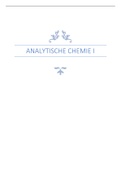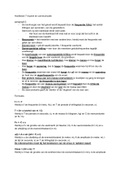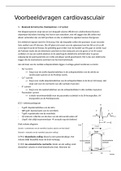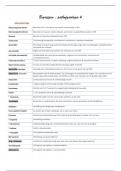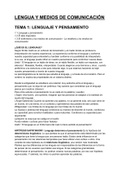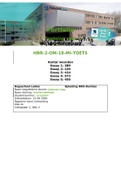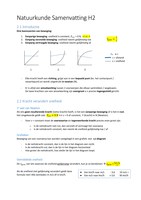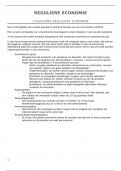Theorising Spatial Practices
College 1 – Course Introduction and Lecture: Placemaking (11/04)
Overarching Course themes
Conflict:
“Consensus is needed on the institutions constitutive of
democracy and on the “ethicopolitical” values informing
the political association – liberty and equality for all – but
there will always be disagreement concerning their
meaning and the way they should be implemented. In a
pluralist democracy such disagreements are not only
legitimate but also necessary. They provide the stuff of
democratic politics.” – Chantal Mouffe 2005.
For example: you come here to the lecture even when
you don’t like that it is so early. The common consensus
is that you eventually come even you hate it. There is a
disagreement. In urban space you can translate this to a
road when people think that it is necessary and others hate it.
Spatial (In)Justice: „A critical spatial perspective of some sort has become increasingly
relevant to understanding the contemporary condition, whether we are pondering the
increasing intervention of electronic media in our daily routines, trying to understanding the
multiplying geopolitical conflicts around the globe, or seeking ways to act politically…“
Edward Soja 2010. „we are just as much spatial as temporal beings…“ – Edward Soja 2010
Contested Identities: Who and what matters in planning and placemaking? Whose
perspectives are included/ignored/consulted? Contested identities are more about the
groups in the city that forms the city. Like the Black Lives Matter movement.
Space and place
Space: Abstract, potentially disembodied(vague), physical/mathematical, measurable,
without meaning?
Place: Tangible, concrete, locatable, sensed, embodied, endowed with meaning?
‘Space is a practiced place’ – de Certeau 1984
‘Place is to space (…) what solid(place) is to fluid(space), form to process: an anchor, a
grounding. That is to say: space as social dynamic – constantly changing, constantly
developing – space manifests itself through place’ – Vermeulen 2015
Space and place are always connected to each other.
’Place is also a way of seeing, knowing and understanding the world’ – Creswell 2005
Human action makes a place. For example you don’t play a video in the lecture but you listen
to it on your headphones.
“When humans invest meaning in a portion of space and then become attached to it in some
way (naming is one such way) it becomes a place.” – Creswell 2011
“What begins as undifferentiated space becomes place as we get to know it better and
endow it with value … the ideas ‘space’ and ‘place’ require each other for definition.(They are
connected). From the security and stability of place we are aware of the openness, freedom,
and threat of space, and vice vera. Furthermore, if we think of space as that which allows
,movement, then place is pause; each pause in movement makes it possible for location to be
transformed into place.” – Tuan 1977
Three dimensions of place (Agnew, Place and Politics 1987)
1. Location (relationship between this and other places. For example zoning or maps)
2. Locale (haptic settings, built, physical features. For example the colour of the walls)
3. Sense of place (subjective-embodied, affective experience and connection to a place.
The experience and memories of the place.)
Constructions of place are contested, and not the same for everybody
The latter is particularly linked to placemaking, i.e., the active designing of places.
Placemaking
“Placemaking uses the existing assets of a place to their best effect and facilitates creative
patterns of activities and connections – cultural, economic, social, environmental – that
define a place and support its ongoing evolution” – cCourage et al. 2021
Placemaking works with what is already there.
Placemaking is a tricky, inter-disciplinary beast, it has many definitions and applications
It has both positive and negative connotations to different user groups of
public/privat(ized) space
It is used by scholars, critics, practitioners (planners, policymakers, tourism and heritage
agents, real estate developers, cultural organizations etc.)
Placemaking & overarching course themes
Placemaking is relevant for this course because it interrelates with all three overarching
course themes:
Placemaking & Conflict: draws attention to the contested power and politics of place,
mobilizes consciousness that every place could be transformed.
Intersectional* (!) placemaking draws attention to the multiple interdependencies between
gender, race, class and other identity-markers that condition that power and politics of place,
belonging and participation are always contested
Intersectional = the complex, cumulative way in which the effects of multiple forms
of discrimination (such as racism, sexism, and classism) combine, overlap, or
intersect especially in the experiences of marginalized individuals or groups.
Placemaking & Spatial (In)Justice: points to the multiple dimensions of uneven geographies.
Placemaking points to the multiple practices to discuss the distribution of power and
justice (e.g., top-down, bottom-up processes, or the many iterations in-between)
Placemaking & Contested Identities: appeals to the different experiences of spatial design
(who are they designed for, by, how do places feel like to whom?), creates sensibility about
inclusions and exclusions.
Placemaking includes and excludes identities/groups
Placemaking affects feelings of safety, security,
belonging, feeling welcome (or not)
Guidelines for placemaking
Placemaking means creating places and focuses on
transforming public spaces to strengthen the
connections between people and these
places. Placemaking is a process centered on people
and their needs, aspirations, desires, and visions, which
relies strongly on community participation.
1. The Community is The Expert
, 2. Create a Place, Not a Design
3. Look for Partners
4. They Always Say “It Can’t Be Done.”
5. Have a Vision
6. You Can See a Lot Just By Observing
7. Form Supports Function
8. Triangulate
9. Experiment: Lighter, Quicker, Cheaper
10. Money Is Not The Issue
11. You Are Never Finished
Outlook: The Politics of Placemaking
“An imperative of placemaking going forward is a public and enacted commitment to
intersectionality: a place that is unwelcome for one is unwelcoming for all and serves only to
perpetuate divisive social, political and material relations….Who is allowed a place in our
places, who is heard there, and who sits at the decision-making table, determines what our
places can be, and an emancipatory and intersectional placemaking is key to achieving place
justice.” – Courage et al.
College 1 – Course Introduction and Lecture: Placemaking (11/04)
Overarching Course themes
Conflict:
“Consensus is needed on the institutions constitutive of
democracy and on the “ethicopolitical” values informing
the political association – liberty and equality for all – but
there will always be disagreement concerning their
meaning and the way they should be implemented. In a
pluralist democracy such disagreements are not only
legitimate but also necessary. They provide the stuff of
democratic politics.” – Chantal Mouffe 2005.
For example: you come here to the lecture even when
you don’t like that it is so early. The common consensus
is that you eventually come even you hate it. There is a
disagreement. In urban space you can translate this to a
road when people think that it is necessary and others hate it.
Spatial (In)Justice: „A critical spatial perspective of some sort has become increasingly
relevant to understanding the contemporary condition, whether we are pondering the
increasing intervention of electronic media in our daily routines, trying to understanding the
multiplying geopolitical conflicts around the globe, or seeking ways to act politically…“
Edward Soja 2010. „we are just as much spatial as temporal beings…“ – Edward Soja 2010
Contested Identities: Who and what matters in planning and placemaking? Whose
perspectives are included/ignored/consulted? Contested identities are more about the
groups in the city that forms the city. Like the Black Lives Matter movement.
Space and place
Space: Abstract, potentially disembodied(vague), physical/mathematical, measurable,
without meaning?
Place: Tangible, concrete, locatable, sensed, embodied, endowed with meaning?
‘Space is a practiced place’ – de Certeau 1984
‘Place is to space (…) what solid(place) is to fluid(space), form to process: an anchor, a
grounding. That is to say: space as social dynamic – constantly changing, constantly
developing – space manifests itself through place’ – Vermeulen 2015
Space and place are always connected to each other.
’Place is also a way of seeing, knowing and understanding the world’ – Creswell 2005
Human action makes a place. For example you don’t play a video in the lecture but you listen
to it on your headphones.
“When humans invest meaning in a portion of space and then become attached to it in some
way (naming is one such way) it becomes a place.” – Creswell 2011
“What begins as undifferentiated space becomes place as we get to know it better and
endow it with value … the ideas ‘space’ and ‘place’ require each other for definition.(They are
connected). From the security and stability of place we are aware of the openness, freedom,
and threat of space, and vice vera. Furthermore, if we think of space as that which allows
,movement, then place is pause; each pause in movement makes it possible for location to be
transformed into place.” – Tuan 1977
Three dimensions of place (Agnew, Place and Politics 1987)
1. Location (relationship between this and other places. For example zoning or maps)
2. Locale (haptic settings, built, physical features. For example the colour of the walls)
3. Sense of place (subjective-embodied, affective experience and connection to a place.
The experience and memories of the place.)
Constructions of place are contested, and not the same for everybody
The latter is particularly linked to placemaking, i.e., the active designing of places.
Placemaking
“Placemaking uses the existing assets of a place to their best effect and facilitates creative
patterns of activities and connections – cultural, economic, social, environmental – that
define a place and support its ongoing evolution” – cCourage et al. 2021
Placemaking works with what is already there.
Placemaking is a tricky, inter-disciplinary beast, it has many definitions and applications
It has both positive and negative connotations to different user groups of
public/privat(ized) space
It is used by scholars, critics, practitioners (planners, policymakers, tourism and heritage
agents, real estate developers, cultural organizations etc.)
Placemaking & overarching course themes
Placemaking is relevant for this course because it interrelates with all three overarching
course themes:
Placemaking & Conflict: draws attention to the contested power and politics of place,
mobilizes consciousness that every place could be transformed.
Intersectional* (!) placemaking draws attention to the multiple interdependencies between
gender, race, class and other identity-markers that condition that power and politics of place,
belonging and participation are always contested
Intersectional = the complex, cumulative way in which the effects of multiple forms
of discrimination (such as racism, sexism, and classism) combine, overlap, or
intersect especially in the experiences of marginalized individuals or groups.
Placemaking & Spatial (In)Justice: points to the multiple dimensions of uneven geographies.
Placemaking points to the multiple practices to discuss the distribution of power and
justice (e.g., top-down, bottom-up processes, or the many iterations in-between)
Placemaking & Contested Identities: appeals to the different experiences of spatial design
(who are they designed for, by, how do places feel like to whom?), creates sensibility about
inclusions and exclusions.
Placemaking includes and excludes identities/groups
Placemaking affects feelings of safety, security,
belonging, feeling welcome (or not)
Guidelines for placemaking
Placemaking means creating places and focuses on
transforming public spaces to strengthen the
connections between people and these
places. Placemaking is a process centered on people
and their needs, aspirations, desires, and visions, which
relies strongly on community participation.
1. The Community is The Expert
, 2. Create a Place, Not a Design
3. Look for Partners
4. They Always Say “It Can’t Be Done.”
5. Have a Vision
6. You Can See a Lot Just By Observing
7. Form Supports Function
8. Triangulate
9. Experiment: Lighter, Quicker, Cheaper
10. Money Is Not The Issue
11. You Are Never Finished
Outlook: The Politics of Placemaking
“An imperative of placemaking going forward is a public and enacted commitment to
intersectionality: a place that is unwelcome for one is unwelcoming for all and serves only to
perpetuate divisive social, political and material relations….Who is allowed a place in our
places, who is heard there, and who sits at the decision-making table, determines what our
places can be, and an emancipatory and intersectional placemaking is key to achieving place
justice.” – Courage et al.


